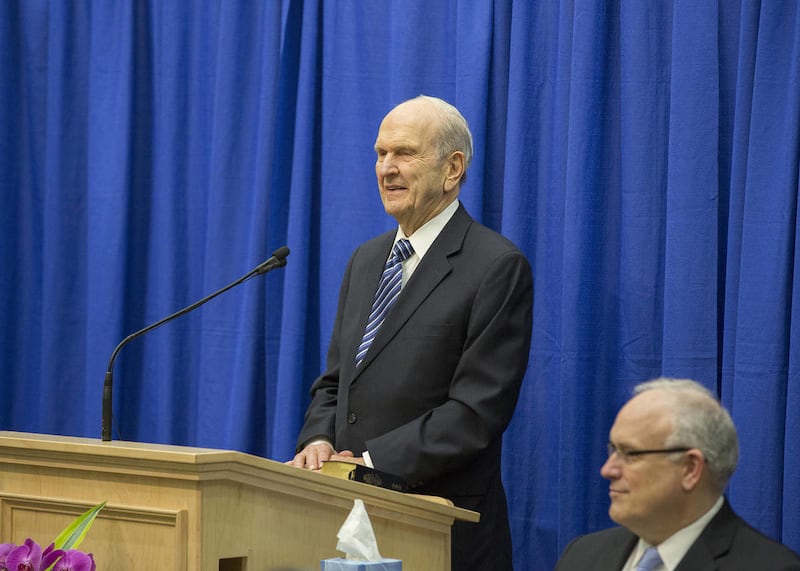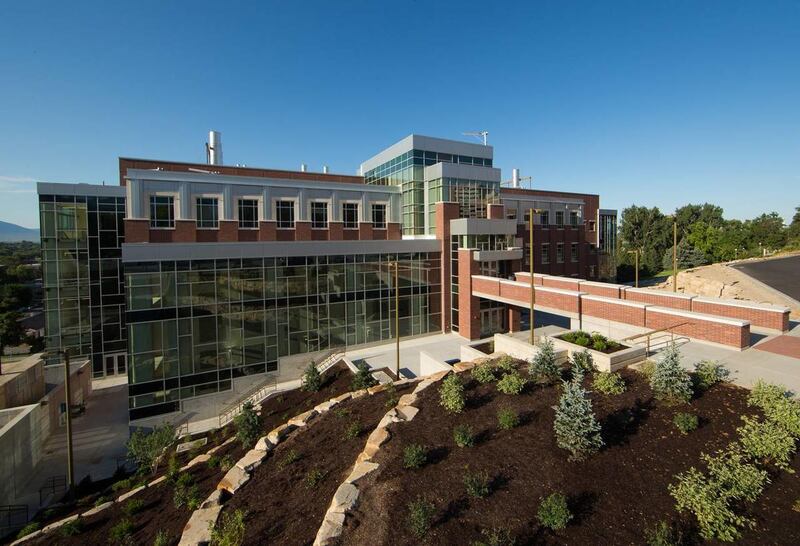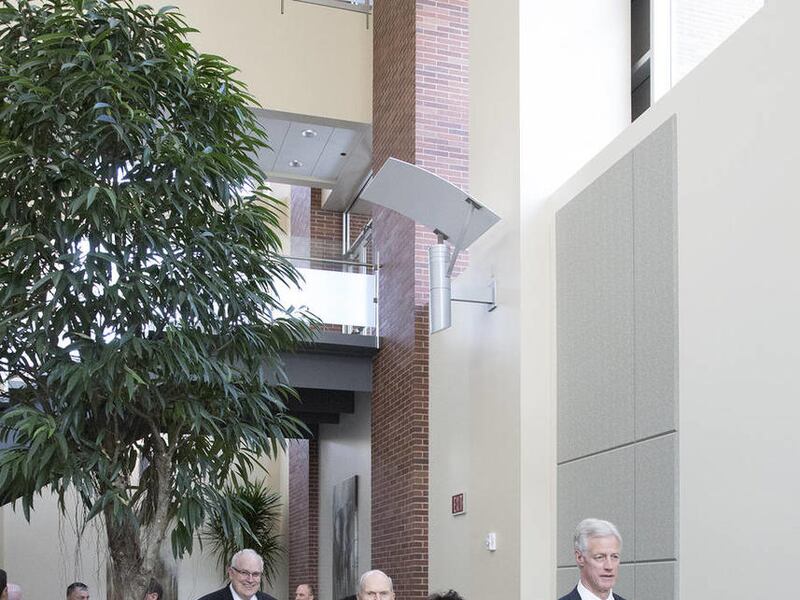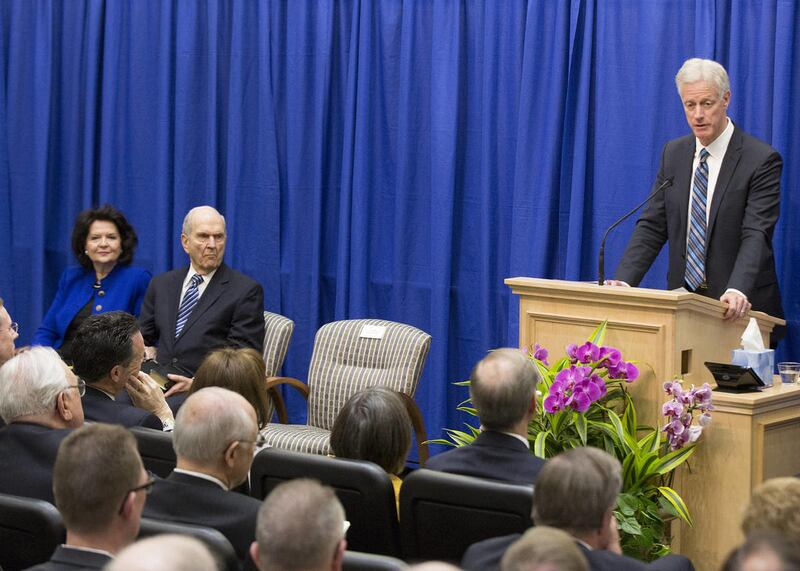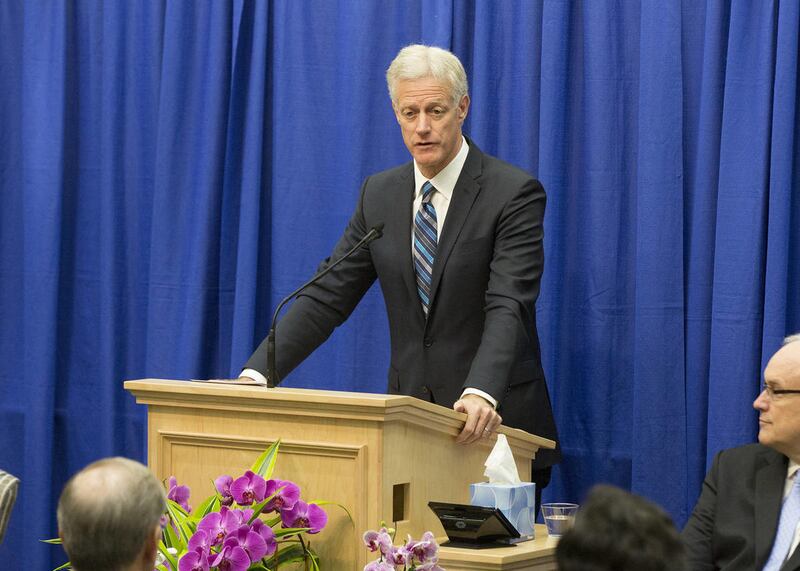PROVO -- Touted as the “gateway” to the south side of the Brigham Young University campus, the new Life Sciences building is as impressive in its physical structure as the work that goes on in the labs and classrooms inside.
“For students, there is nowhere better to confront the questions shared between science and religion than in the College of Life Sciences at Brigham Young University,” said Elder Russell M. Nelson of the Quorum of the Twelve Apostles of The Church of Jesus Christ of Latter-day Saints. “What a blessing this building will be.”
Although the building has been fully functioning for a few months, an official dedication brought students, faculty and staff, university administrators and community members to the new building on Thursday afternoon. Elder Nelson and BYU President Kevin J Worthen spoke during a dedicatory service and the apostle offered a dedicatory prayer.
“This university is committed to search for truth, and teach the truth,” said Elder Nelson. “All truth is part of the gospel of Jesus Christ. Whether truth comes from a scientific laboratory or by revelation from the Lord, it is compatible.”
The five-level building opened its doors for the Fall 2014 semester — a little more than two and a half years after it was announced in November of 2011. Built to look like a river cascading down the hill, the building — whose hallways and labs are filled with plant varieties — will provide classrooms and labs, in addition to facilities for faculty, staff, administrative personnel and student majors.
But more than the large structure with impressive, hi-tech amenities, the new space is a place for students to learn about the creations of God in a scientific setting.
“There is no conflict between science and religion,” said Elder Nelson. “Conflict only arises from an incomplete knowledge of either science or religion, or both.”
Elder Nelson spoke of the great responsibility individuals have to study topics that relate to the creation, physiology and the laws of life.
“Why?” he asked. “Because life comes from God. There will always be a gap between what he knows and what we now know.”
It is through that combination of study and revelation from God that individuals will be able to more fully understand both academically as well as spiritually.
"I think that a person can learn more by studying God's creations than by studying the works of people, even by the most erudite and educated scholars," the LDS church leader said.
President Worthen shared some thoughts about the history of the College of Life Sciences at BYU. What began with a small and slow start in 1954 has turned into a thriving college that includes seven departments, including an entire center dedicated to the study of DNA sequencing.
“And most of all, we have this wonderful facility designated with laboratory space and meeting areas that allow both faculty and students to engage in cutting-edge research,” Worthen said. “This building is a tangible and very large reminder that we really have come a long way in Life Sciences in the last 60 years.
“But the building is only a structure, with little to contribute by itself, to the advancement of the purposes of BYU. The type of building that houses the College of Life Sciences is not nearly as important as the type of people who will teach and study here,” he said.
Drawing again from the history of the college, Worthen told of John A. Widtsoe — the man for whom the college’s last building was named — and who was BYU’s first PhD prepared professor. Although he only spent two years at BYU, he made a large impact on how the college is today, in addition to his service as an apostle and as commissioner of education for the LDS Church.
“During his life, John A. Widtsoe did as much as any contemporary to establish the link between science and the gospel,” Worthen said. “With unparalleled spiritual and intellectual prowess and energy, he sought to erase the artificial distinction between scientific and religious truth. For him, science and religion were inextricably united.”
Just as the educators who came before, that same purpose remains today — to help students learn about scientific and religious truth, in the same context.
The building includes 265,000-square-feet of interior space and will be the home of the College of Life Sciences and five of its seven departments — biology, health science, microbiology and molecular biology, physiology and developmental biology, and plant and wildlife sciences.
mholman@desnews.com @marianne_holman

